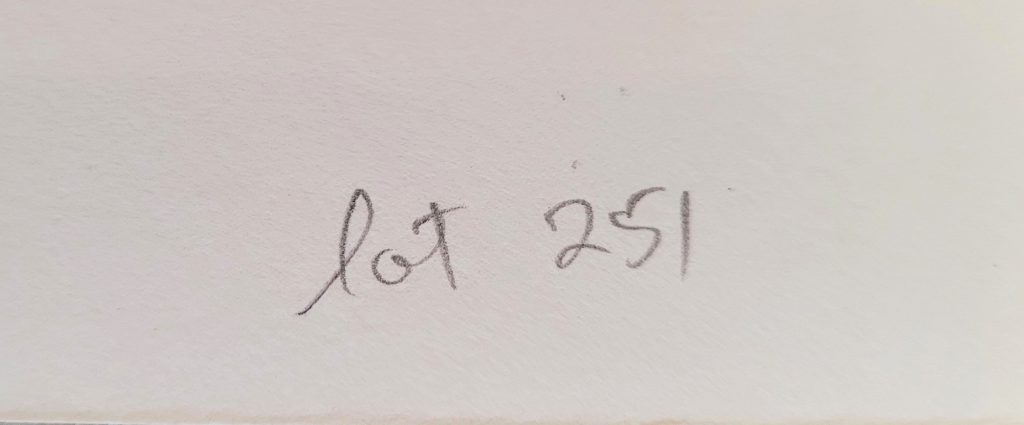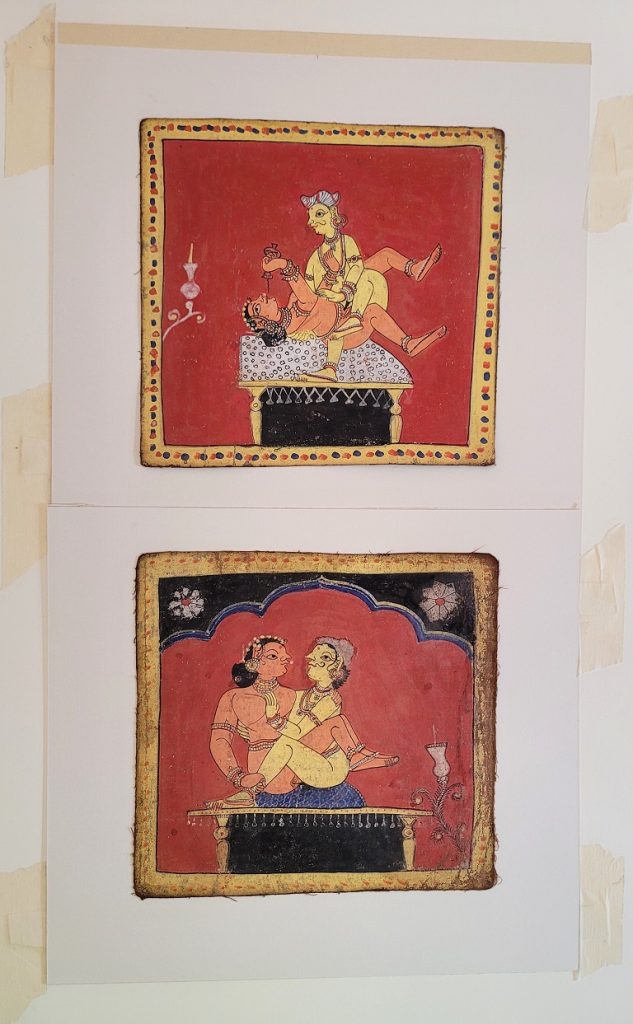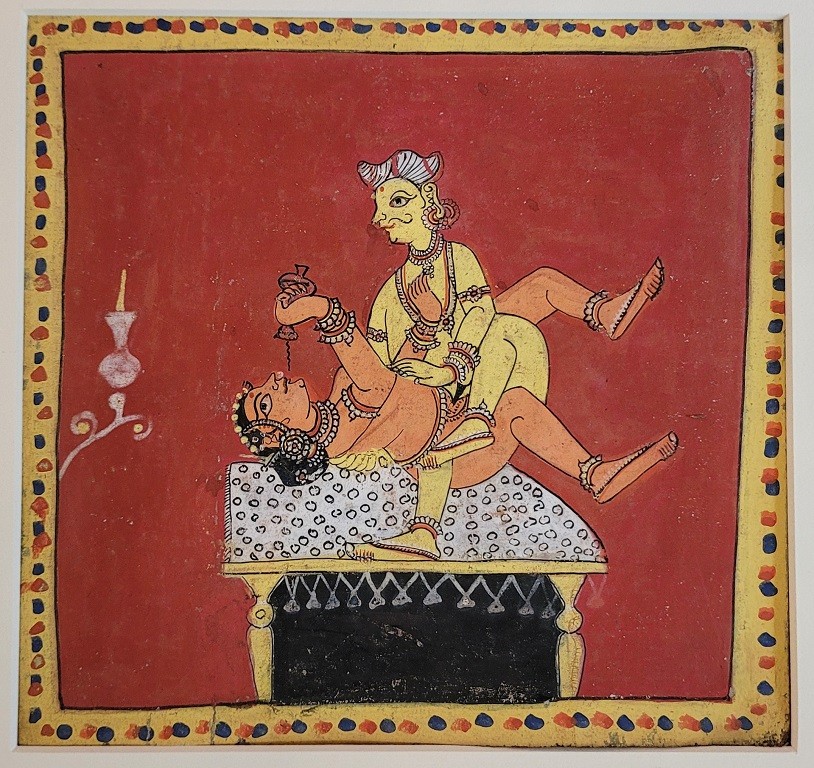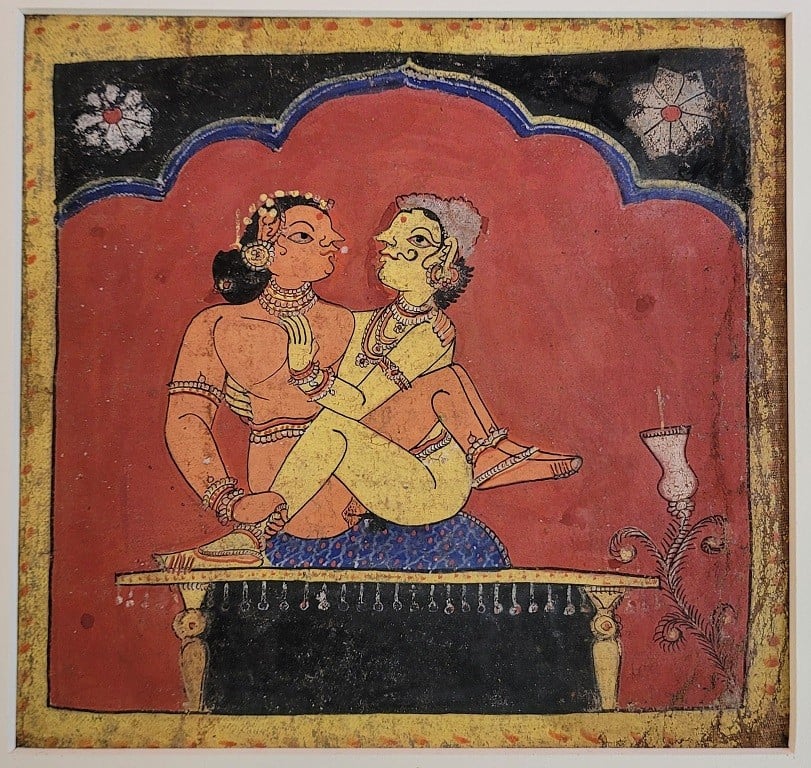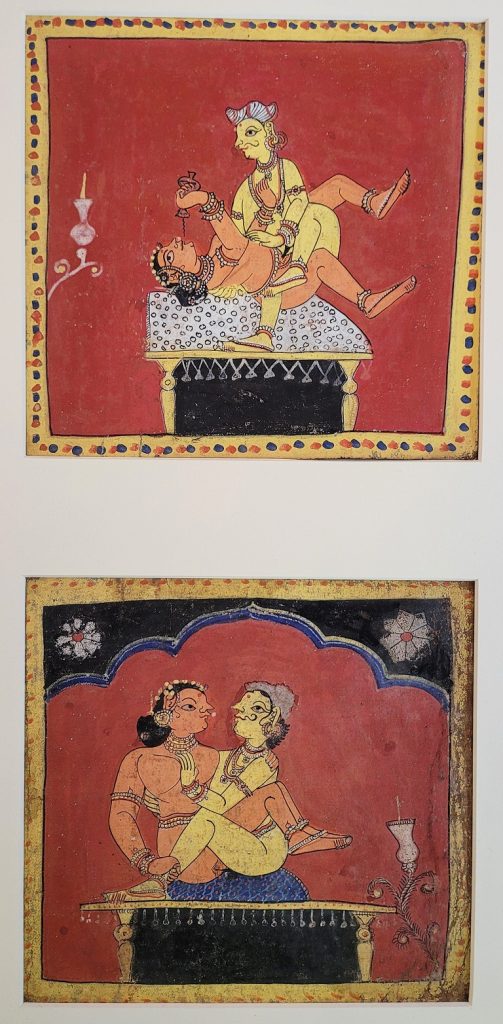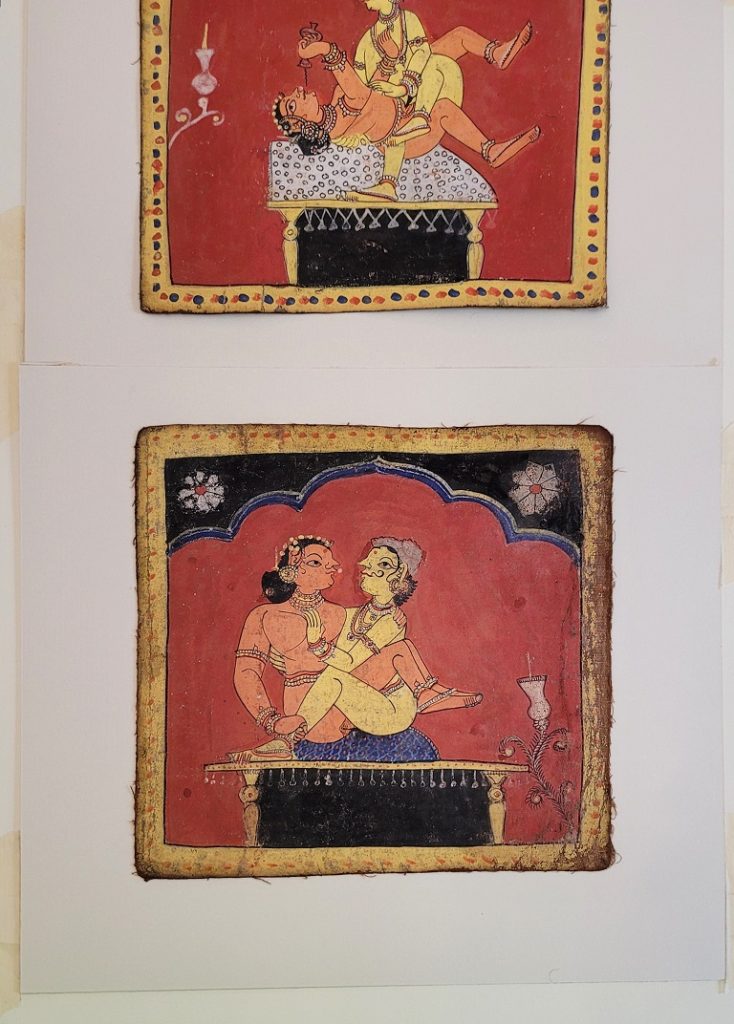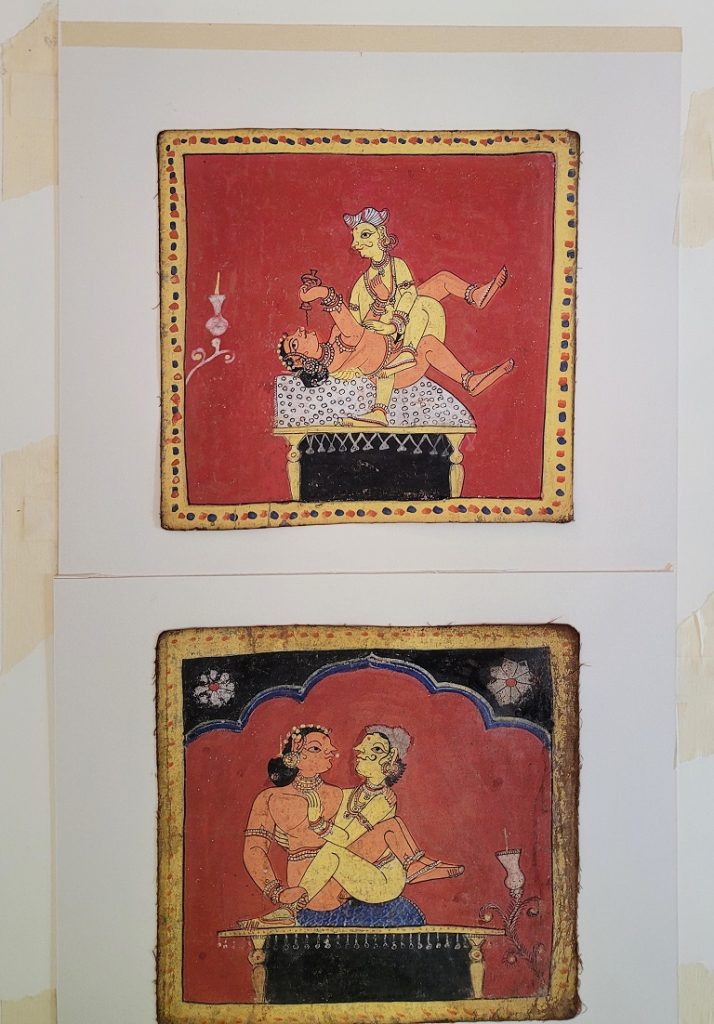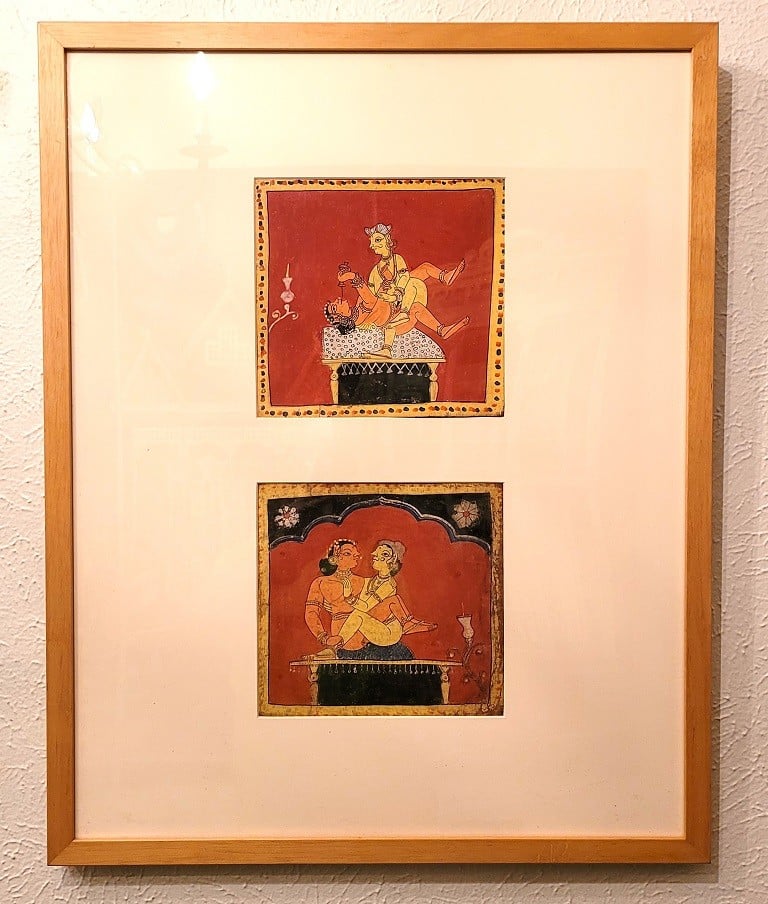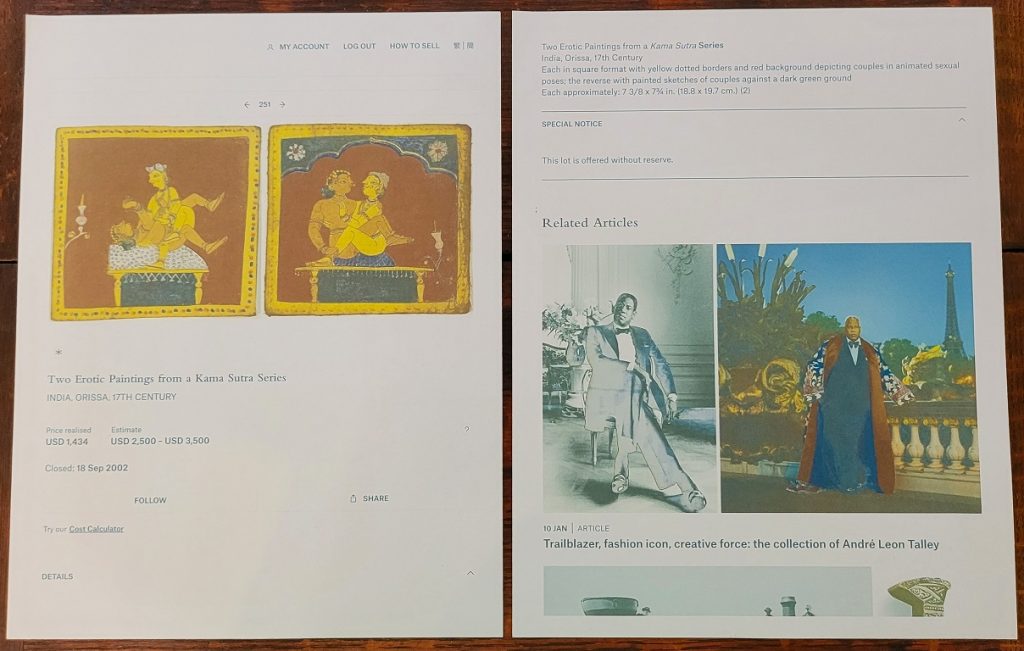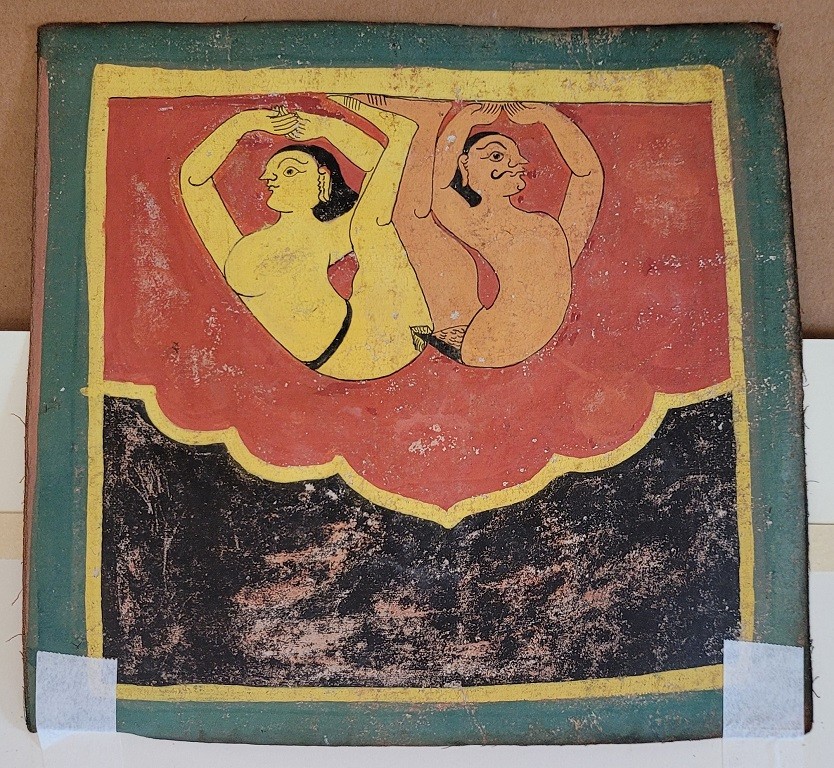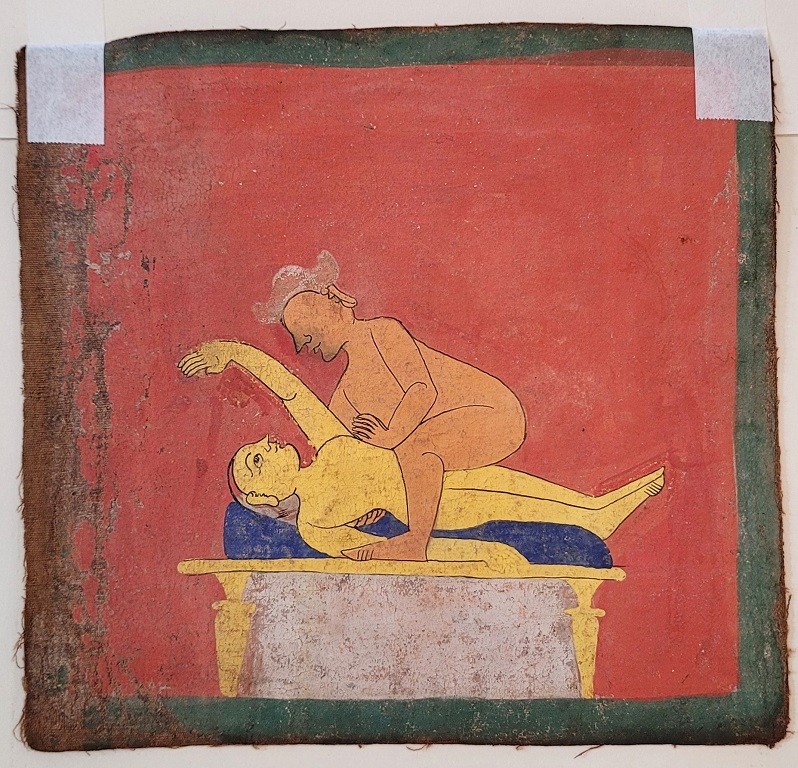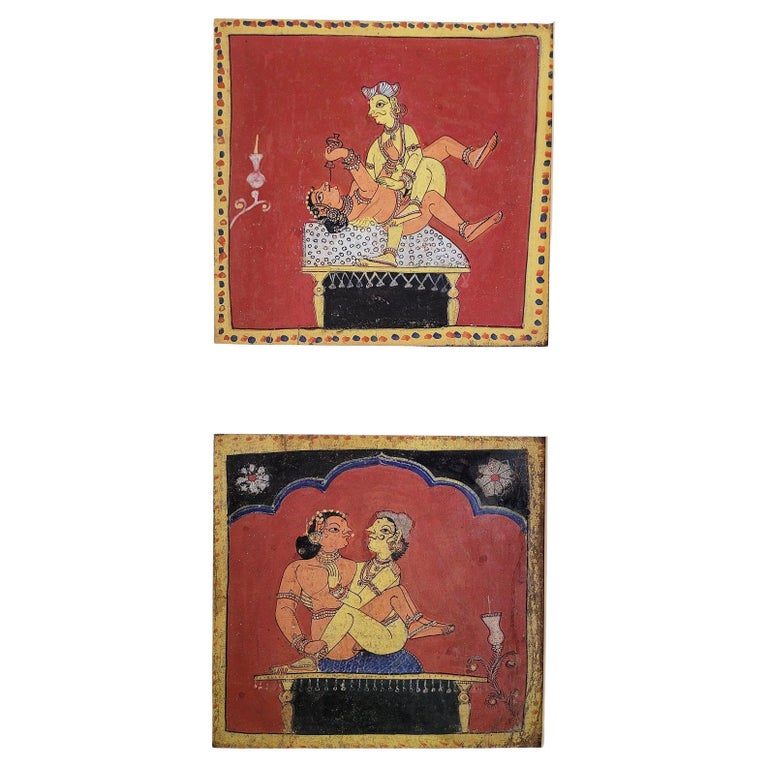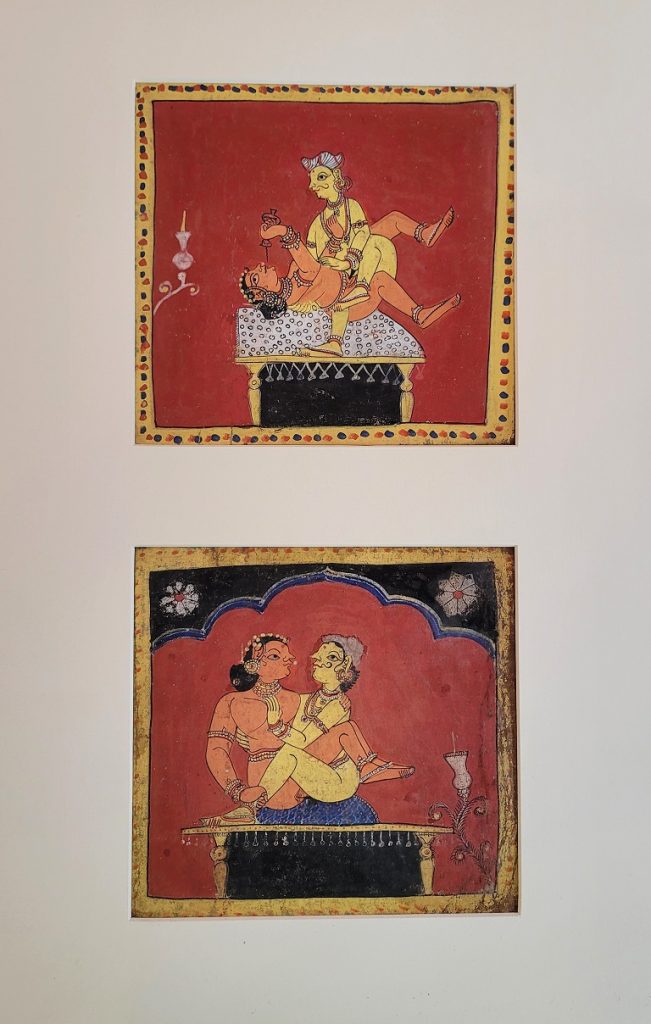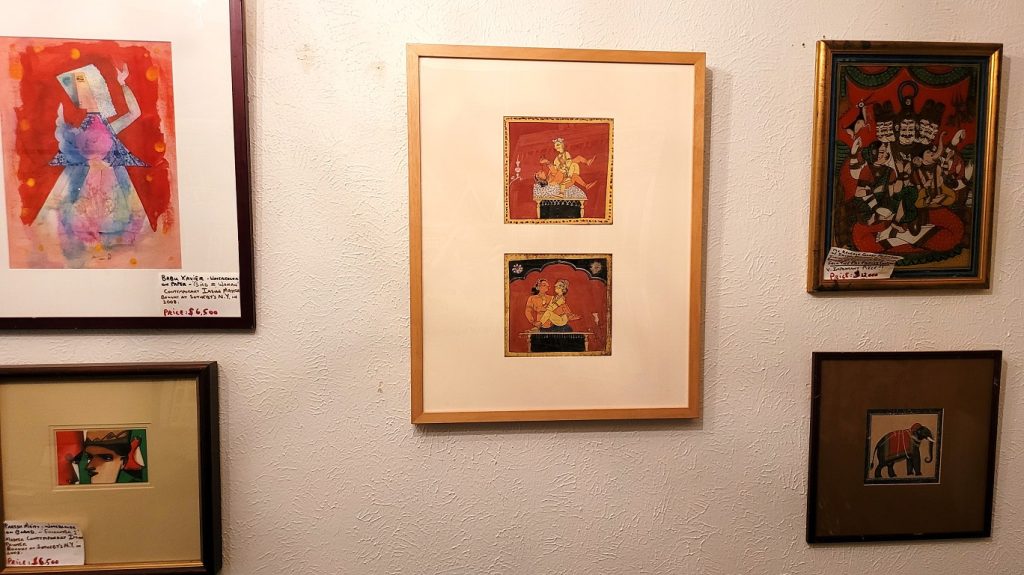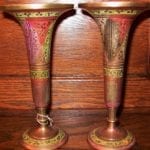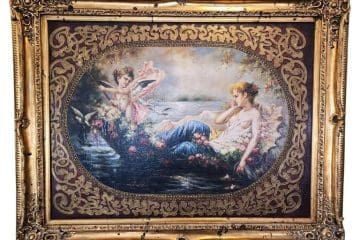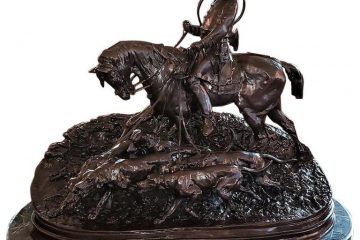Pair of Indian Erotic Paintings from a Kama Sutra Series
PRESENTING a STUNNING piece of Indian Antiquity from the 17th Century, namely, a Pair of Indian Erotic Paintings from a Kama Sutra Series.
India, Orissa, 17th Century.
Hand-painted on cloth canvas.
These have impeccable Provenance!
They were purchased by a Private Dallas Collector at Christie’s New York Auction on 19th September 2002. Sale Number 1115, Lot No. 251.
Christie’s operate a twice yearly auction of Southeast Asian Art & Antiquities in New York in the months of March and September.
The Lot was described as: “Two Erotic Paintings from a Karma Sutra Series.
India, Orissa, 17th Century.
Each in square format with yellow dotted borders and red background depicting couples in animated sexual poses; the reverse with painted sketches of couples against a dark green ground.
Each is approximately: 7 3/8 x 7 3/4 in. (18.8 x 19.7 cm) (2)”
They carried an Auction estimate of USD 2,500 to USD 3,500 and sold for USD 1,434 (including buyers premium).
The ‘buyer’ got a real bargain that day!!
Allowing for inflation alone this would be over $2,500 in today’s value and mid estimate it would be over $5,000.
The original Christie’s Lot No. is still marked in pencil on the matting.
The pair have been custom matted and framed under glass in a plain maple frame (probably by Christies).
It has substantially increased in value over the years as a RARE piece from a prestigious Collection and a RARE piece of Asian antiquity.
The Kama Sutra (/ˈkɑːmə ˈsuːtrə/; Sanskrit: कामसूत्र, pronunciation (help·info), Kāma-sūtra; lit. ’Principles of Love’) is an ancient Indian[1][2] Sanskrit text on sexuality, eroticism and emotional fulfillment in life.[3][4][5] Attributed to Vātsyāyana,[6] the Kama Sutra is neither exclusively nor predominantly a sex manual on sex positions,[3] but rather was written as a guide to the art of living well, the nature of love, finding a life partner, maintaining one’s love life, and other aspects pertaining to pleasure-oriented faculties of human life.[3][7][8] It is a sutra-genre text with terse aphoristic verses that have survived into the modern era with different bhāṣyas (exposition and commentaries). The text is a mix of prose and anustubh-meter poetry verses. The text acknowledges the Hindu concept of Purusharthas, and lists desire, sexuality, and emotional fulfillment as one of the proper goals of life. Its chapters discuss methods for courtship, training in the arts to be socially engaging, finding a partner, flirting, maintaining power in a married life, when and how to commit adultery, sexual positions, and other topics.[9] The majority of the book is about the philosophy and theory of love, what triggers desire, what sustains it, and how and when it is good or bad.[10][11]
The text is one of many Indian texts on Kama Shastra.[12] It is a much-translated work in Indian and non-Indian languages. The Kamasutra has influenced many secondary texts that followed after the 4th-century CE, as well as the Indian arts as exemplified by the pervasive presence Kama-related reliefs and sculpture in old Hindu temples. Of these, the Khajuraho in Madhya Pradesh is a UNESCO World Heritage Site.[13] Among the surviving temples in north India, one in Rajasthan sculpts all the major chapters and sexual positions to illustrate the Kamasutra.[14] According to Wendy Doniger, the Kamasutra became “one of the most pirated books in English language” soon after it was published in 1883 by Richard Burton. This first European edition by Burton does not faithfully reflect much in the Kamasutra because he revised the collaborative translation by Bhagavanlal Indrajit and Shivaram Parashuram Bhide with Forster Arbuthnot to suit 19th-century Victorian tastes.
Link: https://en.wikipedia.org/wiki/Kama_Sutra
Pair of Indian Erotic Paintings from a Kama Sutra Series
Provenance: See Above.
Condition: Very Good Original condition.
Dimensions: Framed this is 25 inches tall, 20 inches wide and 1.5 inches deep.
SALE PRICE NOW: $8,000
